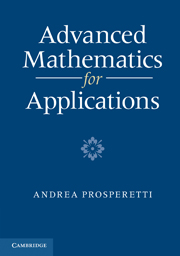Book contents
- Frontmatter
- Contents
- Preface
- To the reader
- List of tables
- Part 0 General Remarks and Basic Concepts
- Part I Applications
- 3 Fourier Series: Applications
- 4 Fourier Transform: Applications
- 5 Laplace Transform: Applications
- 6 Cylindrical Systems
- 7 Spherical Systems
- Part II Essential Tools
- Part III Some Advanced Tools
- Appendix
- References
- Index
7 - Spherical Systems
Published online by Cambridge University Press: 05 June 2012
- Frontmatter
- Contents
- Preface
- To the reader
- List of tables
- Part 0 General Remarks and Basic Concepts
- Part I Applications
- 3 Fourier Series: Applications
- 4 Fourier Transform: Applications
- 5 Laplace Transform: Applications
- 6 Cylindrical Systems
- 7 Spherical Systems
- Part II Essential Tools
- Part III Some Advanced Tools
- Appendix
- References
- Index
Summary
In many ways the sphere is the prototypical three-dimensional body and the consideration of fields in the presence of spherical boundaries sheds light on several features of more general three-dimensional cases.
In all the examples of this chapter extensive use is made of expansions in series of Legendre polynomials, for axi-symmetric problems, or spherical harmonics, for the general three-dimensional case. After a review of the polar coordinate system, we begin with a summary of the properies of these functions which are dealt with in greater detail in Chapters 13 and 14, respectively. While the axi-symmetric situation is somewhat simpler, it is also contained as a special case in the general three-dimensional one and it is therefore expedient to treat it as a special case of the latter.
We start with the general solution of the Laplace and Poisson equations (§7.3) and apply it to several axisymmetric (§§7.4 and 7.5) and non-axisymmetric situations. In all these cases the radial part of the solution consists of powers of r. The examples in the second part of the chapter (§7.13 and §7.14) deal with the scalar Helmholtz equation, for which the radial dependence is expressed in terms of spherical Bessel functions, the fundamental properties of which are summarized in §7.12. The last four sections deal with problems involving vector fields and vector harmonics.
- Type
- Chapter
- Information
- Advanced Mathematics for Applications , pp. 170 - 212Publisher: Cambridge University PressPrint publication year: 2011

